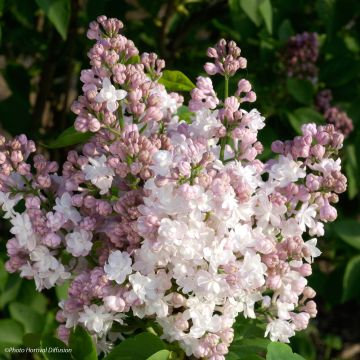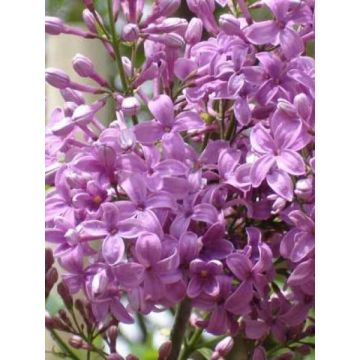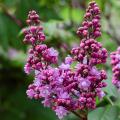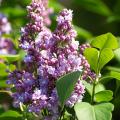Shipping country and language
Your country of residence may be:
Your country of residence is:
For a better user experience on our website, you can select:
Your shipping country:
Andorra
Austria
Belgium
Bulgaria
Canada
Chile
Croatia
Cyprus
Czechia
Denmark
Estonia
Finland
France
Germany
Greece
Hungary
Iceland
Ireland
Italy
Latvia
Lithuania
Luxembourg
Malta
Monaco
Netherlands
Poland
Portugal
Romania
Slovakia
Slovenia
Spain
Sweden
Switzerland
United Kingdom
We only deliver seed and bulb products to your country. If you add other products to your basket, they cannot be shipped.
Language:
French
German
Spanish
English
My Account
Hello
My wish lists
Plantfit
Log in / Register
Existing customer?
New customer?
Create an account to track your orders, access our customer service and, if you wish, make the most of our upcoming offers.
Drought-tolerant Lilac, all our special offers
Does this plant fit my garden? Set up your Plantfit profile →
Available in 1 sizes
Available in 2 sizes
Available in 1 sizes
Available in 1 sizes
A selection of Lilacs for dry soil, more tolerant of summer drought. The wild common lilac (Syringa vulgaris) is a modest and hardy bush that withstands dry summers once rooted, more so than its many horticultural varieties. The most water-efficient are undoubtedly the lilacs that come from dry regions of Asia and the Middle East, particularly from China, Central Asia, and Asia Minor. Blooming early in the season, with small leaves, these shrubs seem better equipped to face dry summers. In this category, we find adorable Chinese lilacs: Syringa patula 'Miss Kim' with pale lilac flowers, Syringa meyeri 'Palibin' with light mauve clusters, and Syringa microphylla 'Superba' with true pink flowers. The Persian lilac Syringa x persica is also known for its sobriety. It is a natural hybrid that appeared in Afghanistan and Pakistan, where it is common in gardens. Other botanical species, although less cultivated, present a real advantage for non-irrigated gardens. Let's mention the For example, Syringa afghanica, native to the mountainous regions of Afghanistan and Iran, adapted to semi-arid climates. A small bush reaching a maximum size of 1.5m (5ft) in all directions, flexible and graceful, it has parsley-like foliage and produces small mauve and fragrant clusters in April. In recent years, specific Lilacs have been created "for the Midi". Common Blue Skies Lilac (‘Monore’), selected in southern California, adapted to Mediterranean climates, is a bush that produces spectacular clusters of lavender-blue flowers. Or the Chinese Lilac ‘Lilac Sunday’ with rather early flowering, blooming along its arching stems, forming long lavender-scented spikes. It exists alongside many others, as well as numerous hybrids that will satisfy the most demanding gardeners. To accompany them in the garden, also discover a selection of bushes for dry terrain.
Resistance to drought, just like hardiness, depends on several factors. For the lilacs presented here, it should be kept in mind that a mature bush, deeply rooted, will be much more resilient than a young plant. Similarly, a deep soil with a tendency towards loam or clay retains moisture better than a rocky or sandy soil. Water your young lilacs regularly during the first few months, and then until the third summer in our particularly dry regions in summer. In addition, mulching can help retain moisture and prevent water loss through evaporation. As a general rule, autumn planting is preferred.
Haven't found what you were looking for?
The flowering period indicated on our website applies to countries and regions located in USDA zone 8 (France, the United Kingdom, Ireland, the Netherlands, etc.)
It will vary according to where you live:
- In zones 9 to 10 (Italy, Spain, Greece, etc.), flowering will occur about 2 to 4 weeks earlier.
- In zones 6 to 7 (Germany, Poland, Slovenia, and lower mountainous regions), flowering will be delayed by 2 to 3 weeks.
- In zone 5 (Central Europe, Scandinavia), blooming will be delayed by 3 to 5 weeks.
In temperate climates, pruning of spring-flowering shrubs (forsythia, spireas, etc.) should be done just after flowering.
Pruning of summer-flowering shrubs (Indian Lilac, Perovskia, etc.) can be done in winter or spring.
In cold regions as well as with frost-sensitive plants, avoid pruning too early when severe frosts may still occur.
The planting period indicated on our website applies to countries and regions located in USDA zone 8 (France, United Kingdom, Ireland, Netherlands).
It will vary according to where you live:
- In Mediterranean zones (Marseille, Madrid, Milan, etc.), autumn and winter are the best planting periods.
- In continental zones (Strasbourg, Munich, Vienna, etc.), delay planting by 2 to 3 weeks in spring and bring it forward by 2 to 4 weeks in autumn.
- In mountainous regions (the Alps, Pyrenees, Carpathians, etc.), it is best to plant in late spring (May-June) or late summer (August-September).
The harvesting period indicated on our website applies to countries and regions in USDA zone 8 (France, England, Ireland, the Netherlands).
In colder areas (Scandinavia, Poland, Austria...) fruit and vegetable harvests are likely to be delayed by 3-4 weeks.
In warmer areas (Italy, Spain, Greece, etc.), harvesting will probably take place earlier, depending on weather conditions.
The sowing periods indicated on our website apply to countries and regions within USDA Zone 8 (France, UK, Ireland, Netherlands).
In colder areas (Scandinavia, Poland, Austria...), delay any outdoor sowing by 3-4 weeks, or sow under glass.
In warmer climes (Italy, Spain, Greece, etc.), bring outdoor sowing forward by a few weeks.

















